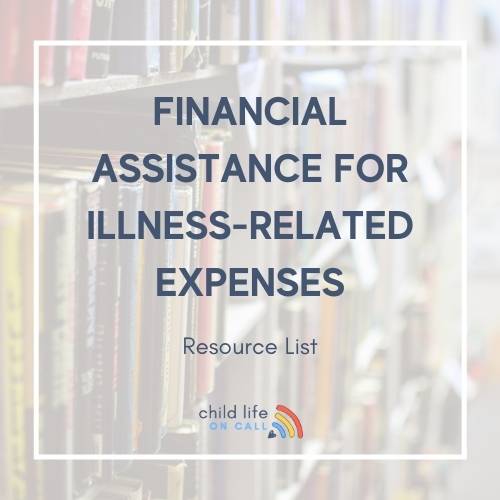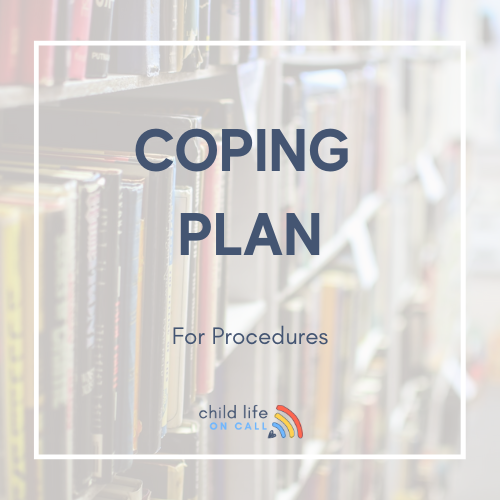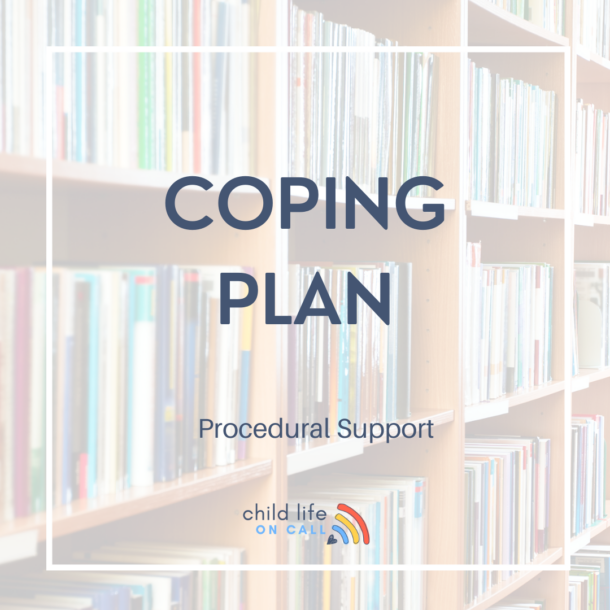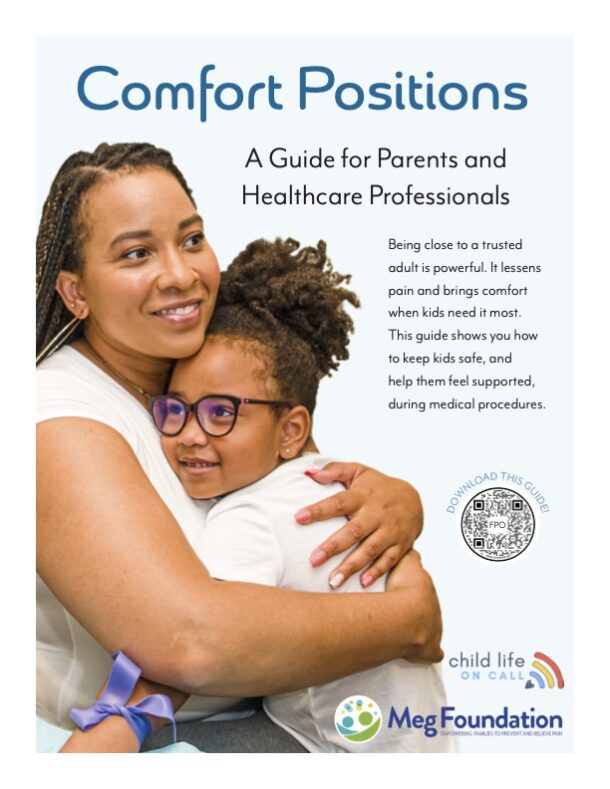If, as a parent, you haven’t yet experienced a pediatric urgent care visit, don’t worry. There’s still time. And when you do, it be helpful if you (and your child) are ready! In this blog post, Certified Child Life Specialist, Child Life on Call founder, and expert Piper + Enza contributor Katie Taylor talks about navigating pediatric urgent care visits and offers tips to put your child at ease in what might be an anxious experience for them. This blog was originally written for and published by Piper + Enza.
It’s a Sunday evening before a holiday and it never fails that, of course, this is the time that your child needs urgent care. Your regular pediatrician is closed for the holiday, and you have to take your child in to be seen at a place you’ve never been to before.
The good news is, after you read this blog post, you’ll be more informed about pediatric urgent care visits, which can create a more seamless experience for you and your child.
What is urgent care, and how is it different than emergent care?
Emergent care is designed to handle life-threatening or severe conditions that require immediate intervention to save lives and prevent further harm. Examples include heart attacks, strokes, severe trauma, and major fractures. These situations demand swift action and are typically treated in hospital emergency departments, where specialized resources are available around the clock.
On the other hand, urgent care addresses non-life-threatening conditions that still require prompt medical attention. This can include minor injuries, mild to moderate illnesses, and cuts needing stitches. Urgent care centers offer convenient walk-in services, often with extended hours, providing comprehensive care outside of the hospital setting.
What are the top reasons that kids are seen at urgent care?
When flu season isn’t running the urgent care scene, you can expect that you might need to bring your child to urgent care for the following reasons:
- Minor Injuries: Children are prone to accidents and injuries, such as cuts, bruises, sprains, and minor fractures. Urgent care centers can provide immediate medical attention for these types of injuries.
- Respiratory Infections: Common illnesses like colds, flu, and respiratory infections are prevalent among children. Urgent care can offer diagnosis and treatment options, including symptom relief and appropriate medications.
- Ear Infections: Ear infections are a frequent reason for pediatric urgent care visits. Symptoms like ear pain, fever, and ear drainage require prompt evaluation and potential treatment with antibiotics.
- Gastrointestinal Issues: Stomachaches, vomiting, and diarrhea are common complaints in children. Urgent care facilities can assess the severity of these symptoms, provide hydration measures, and recommend appropriate treatment.
- Allergies and Asthma: Children may experience allergic reactions, such as food allergies or insect bites, that require urgent care attention. Additionally, asthma exacerbations or breathing difficulties necessitate immediate evaluation and management
What are common stressors for families during pediatric urgent care visits?
It is normal to feel anxious about wait times, meeting new healthcare providers, and whether your concerns will be taken seriously. Understanding what makes pediatric urgent care “pediatric” and the specialized training providers receive in pediatrics can help ease some of your concerns.
What makes a pediatric urgent care “pediatric”?
A pediatric urgent care facility exclusively treats patients ranging from newborns to 21 years old, catering specifically to children (East Tennessee Children’s Hospital, 2019). The healthcare providers working in pediatric urgent care undergo additional training, lasting between one to three years, in addition to their initial training (Healthy Children, 2020). These providers complete their clinical rotations in pediatrics during medical school and further refine their skills through residency programs specializing in inpatient general pediatrics.
What if you can’t go to a pediatric urgent care?
That’s okay! Urgent care facilities, even if they aren’t “pediatric,” are trained and prepared to provide care for babies, children, teens, and adults, so rest assured that your family will get the care they need. Urgent care facilities can provide care to whoever enters their facility, and if they can’t, have the skills and team necessary to “triage” your family member and help you get to the closest facility that can help.
If you do find yourself in a non-pediatric-centered environment, there are still things you can do to help your child feel more comfortable in the space:
- Build up the relationship between your child and the care team. Building rapport is essential for having your child feel “safe” with a new person. So although asking the doctor what their favorite color is may seem silly, it is a fun way to connect your child and the provider on a more intimate level.
- Advocate for your child by reminding the care team that kids are not “mini adults” and require slower, more empathetic care. Consider telling the providers what has helped your child cope with previous situations and see what you can replicate in this scenario.
- Ask the team what special considerations are taken for their smallest patients. Do they offer extra opportunities for pain management or comfort care? It’s ok to question providers, respectfully, to get insight on numbing creams, anti-anxiety medication, and parental presence.
What you need to prepare for an urgent care visit:
Let’s make your child’s urgent care visit as comfortable as possible. First off, it’s essential to provide validation and comfort. You know your child best, so let them know that it’s absolutely okay to feel nervous about new experiences. Show your support and build their trust by encouraging them to ask questions and express their concerns openly.
Now, let’s talk about keeping things fun and distracting. Urgent care visits can be a bit boring as you spend time in the waiting room. Long wait times can lead to upsetting feelings that could cause more anxiety. Consider making the most of it by playing a game of “I Spy” in the office or waiting room. It’s a simple yet engaging activity that can help your child feel more at ease and create a sense of comfort.
Oh, and don’t forget those comfort items! Bringing along your child’s favorite toy, blanket, or stuffed animal can work wonders in reducing stress and anxiety. Having something familiar by their side can make the whole experience feel a lot cozier.
Remember, parents, your presence and support make a world of difference to your child during their urgent care visit. By validating their feelings, providing simple distractions, and bringing comfort items, you’ll be helping them navigate this new experience with confidence and comfort.
Put it all together before the visit
In conclusion, understanding urgent care visits with kids can greatly enhance your experience as a parent. Urgent care is designed to address non-life-threatening conditions promptly, providing convenient walk-in services outside of the hospital setting. From minor injuries to respiratory infections, ear infections, gastrointestinal issues, and allergies/asthma, urgent care centers are equipped to handle a range of common pediatric concerns.
Being aware of the stressors that families may face during pediatric urgent care visits, such as wait times and meeting new healthcare providers, can help alleviate anxiety. Pediatric urgent care facilities cater specifically to children, and the providers undergo specialized training in pediatrics to ensure high-quality care.
To prepare for an urgent care visit, offering validation and comfort to your child’s feelings can make a significant difference. Keeping them engaged with simple distractions like games or bringing comfort items from home can help create a more reassuring environment.
By implementing these strategies, you can navigate urgent care visits with confidence, providing the support and comfort your child needs during these potentially stressful times. Remember, your presence and understanding make a world of difference in your child’s healthcare journey.
References:
Healthy Children. (2020, September 1). A Pediatrician’s Training. HealthyChildren.org.













